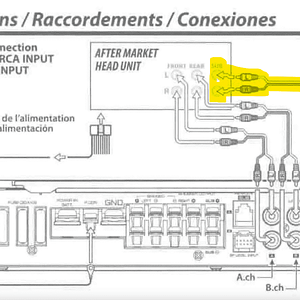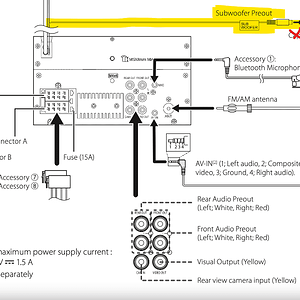For good reading about all things car audio, I recommend
the12volt.com There is everything there from how to build a box to why you need the big three.
The sub and amp you have are a great match. With the sub wired in parallel at 2Ω, the amp is supposed to do 900 watts and your woofer is rated at 700 watts. I recommend building or having built, a ported enclosure that's designed for that driver, tuned somewhere around 36hz.
As for wire size, I would argue that 1/0 the first time is your best bet. At the least, 2 gauge. The wire and electrical system are the foundation of any audio system and you wouldn't build your house on a poor foundation so it stands to reason that you wouldn't build a sound system on one either. Overbuilding (using 1/0) will ensure that your amp runs as cool as possible and that it produces as much power as it possible can, without strain. This translates to a longer lifespan for your amp(s) and speakers. CCA (copper clad aluminum) is less expensive than OFC (oxygen free copper) and as long as you aren't chasing tenths of a dB in competitions, it is more than ample. Where CCA falls short is that it carries 15-25% less current than pure copper and that number increases with heat. However, to reiterate... if you aren't chasing points, it's not big on the "bang per buck" scale. Another thing to be sure of is that you use good quality ANL fuses on the power wire and don't use a breaker. Breakers don't trip as quickly as fuses in low resistant short scenarios and as such, present a danger to the electrical system and amplifiers. Lastly, make sure that ALL of your system grounds are made to bare metal and that they are tight and protected from corrosion. A simple coating with cheap spray paint or, even better, undercoating like Flex Seal or Plasti Dip works great.
For now, an AGM battery under the hood is a good idea and eventually, you'll want to upgrade the alternator but that's not necessary with the power you're running, provided that you do the big three and use good wire. Another good upgrade is a battery or capacitor near the amplifiers. You want ~100 amp hours of battery for every 1000 watts of power and dollar for dollar, a small AGM battery that costs the same as a capacitor is, in my opinion, a better solution. Caps can provide short bursts of current but they do not store enough current to provide sustained help to the electrical system.
The last consideration with respect to providing enough power is speaker wire. Again, bigger is always better so don't cut corners here. For the system you have, I would run 10 gauge speaker wire to the sub or, two runs of 12. For the mids and highs and since I don't know the power of that amp, run at least 16 gauge. Since you probably don't have a warehouse full of different wire sizes laying around your house, I would recommend buying a spool of 12 gauge that can be used for all your speakers. A 50' spool isn't very expensive and again here, you can use CCA. Just keep in mind that when you buy any wire, especially car audio wire, there are more than one wire sizing standards in the world and a lot of the wire that comes from Asia is rated differently. So if you're buying wire that doesn't specify "true AWG" or "American AWG", it will be slightly smaller. For instance, 10 gauge Chinese wire will be equivalent to 12 gauge American AWG wire. Most people believe this to be a deceptive practice and in some cases it is. But doing some due diligence is your responsibility so if you see some wire that's 50% less expensive than other wires of that same gauge... assume it's rated with the smaller standard and adjust your sizing accordingly.
For patch cables (RCAs), use decent quality cables but not the cheapest you can find. Signal cables are very important but trust me, I used to sell XLO Electric's cables in home theater and there is for sure a point where the expense of a cable is not justifiable because the improvements it makes are not audible. Fifty to seventy five cents per foot for patch cables will get you good quality signal wires.
Now that you have a great foundation upon which to build a great sounding system... deadener. I would recommend it for the doors and trunk/hatch. But, I wouldn't recommend it as a first priority, especially if you're on a tight budget and are doing the install yourself. For the power you're running, you are better off to get the system built and then go to chasing rattles. With all the window up, turn the system up to high volume and start walking around the car listening for unpleasant noises. When you find you can fix em. Also for a tight budget, undercoating or Flex Seal is a good deadener, just make sure you don't get overspray on things you don't want painted. Plasti Dip also claims sound deadening qualities and while I have used it, I haven't used it to deaden panels so I can't speak to it's effectiveness. That said, it's a rubberized coating so I'm sure it has some ability to deaden.
Lastly, gain setting. This is perhaps the most critical part of building a loud, clean sound system as opposed to a voice coil cooking machine. The gain settings on your amplifiers are not there to set the volume of the system. The volume you'll get out of the system is determined by equipment, installation, vehicle acoustics and the source you're using. It is pretty much pre determined by those things and cannot be boosted with a gain knob. What gain knobs are for is matching your amplifier's input sensitivity to your source's output voltage. If your head unit provides 2 volts of line level signal and the amp is set to produce maximum power at 2 volts, the system will be just as loud as if the head unit produced 4 volts of line level signal, provided the amp is set accordingly. Too high a gain setting introduces distortion, which causes amplifier strain and overheating of the motors in your speakers.
If you have a DMM (multimeter) there is a procedure that can be followed which will help you get the gains set "pretty close" and to be sure, safe, if you are methodical and set the gains just shy of where that procedure would have you set them. DMMs can be had on the cheap but they aren't the best method. The best method is to use an oscilloscope or a DD-1 distortion detector but, those devices are close to or over $200.00, where a cheap DMM can be bought for a tenth of that price.
Your best bet is to find someone with a scope or a DD-1 who will set them for you, if you're not comfortable with the DMM method. If you were in my town, I would be happy to do it and perhaps there is someone in your area who would be too. If not, call around to some shops and ask how they set gains. If they say by ear... call the next shop. You can probably get them set at a shop for $20-40.00. Some shops may charge a one hour minimum and shop rates are sometimes as high as $75.00 per hour or more. Personally, I wouldn't trade with a shop like that because the gain setting procedure is a ten minute ordeal at the most, in most systems.
I hope that helps and, good luck!


